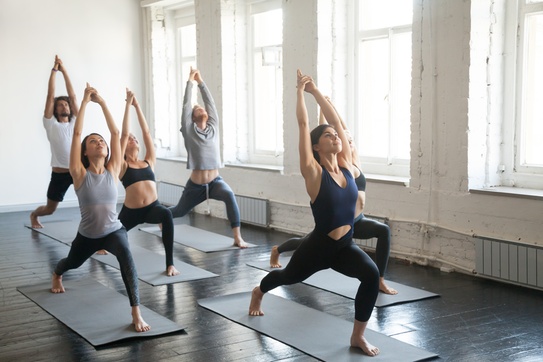In recent years, Canada has witnessed a significant surge in the popularity of yoga, a practice that transcends physical exercise to embrace mental, emotional, and spiritual well-being. This trend has given rise to a multitude of yoga studios across the country, creating a vibrant and diverse community of practitioners. In this article, we will delve into the flourishing landscape of Yoga studios in canada, exploring their growth, unique offerings, and the cultural impact of this ancient practice.
Historical Context:
To comprehend the current yoga studio boom in Canada, it is essential to trace the roots of yoga’s introduction to the country. Yoga, originating from ancient India, began gaining traction in the Western world during the mid-20th century. However, it wasn’t until the late 20th and early 21st centuries that yoga gained widespread popularity in Canada.
The rise of interest in holistic well-being, coupled with an increased awareness of the mind-body connection, contributed to the surge of yoga enthusiasts seeking dedicated spaces to practice and learn. This demand paved the way for the establishment of numerous yoga studios, each with its unique philosophy and approach to the practice.
Geographical Distribution:
Canada’s vast geographical expanse is reflected in the diverse distribution of yoga studios across the country. From the bustling urban centers of Toronto and Vancouver to the serene landscapes of the Canadian Rockies, yoga studios have become integral parts of communities, catering to a wide range of practitioners.
Urban hubs boast a plethora of yoga studios, offering various styles such as Hatha, Vinyasa, Ashtanga, and Kundalini. These studios often feature state-of-the-art facilities, experienced instructors, and a variety of classes to accommodate practitioners of all levels. In contrast, rural areas embrace the natural beauty of their surroundings, with studios often incorporating outdoor spaces for a more immersive experience.
The Yoga Studio Experience:
Yoga studios in Canada prioritize creating an immersive and inclusive experience for practitioners. The ambiance is carefully curated to evoke tranquility and foster a sense of community. Many studios incorporate elements of nature into their design, with large windows providing natural light and serene views.
In addition to physical spaces, the rise of virtual yoga classes has allowed practitioners to access studio-quality instruction from the comfort of their homes. This flexibility has played a crucial role in the continued growth of the yoga community, especially during times of global uncertainty.
Yoga Styles and Specializations:
Yoga studios in Canada offer a diverse array of styles and specializations, catering to the unique preferences and needs of practitioners. Traditional forms like Hatha and Ashtanga coexist with more contemporary styles such as Power Yoga and Hot Yoga. Specialized classes focusing on prenatal yoga, therapeutic yoga, and meditation have also gained popularity, addressing specific health and wellness concerns.
Moreover, some studios embrace cultural diversity by offering classes that integrate elements of different global yoga traditions. This inclusivity reflects Canada’s multicultural ethos and ensures that yoga remains a practice accessible to individuals from all walks of life.
Community Impact:
The impact of yoga studios extends beyond physical exercise, influencing the social and cultural fabric of Canadian communities. Many studios actively engage in community outreach programs, partnering with local schools, healthcare institutions, and community centers to promote the holistic benefits of yoga.
Furthermore, yoga studios often serve as hubs for like-minded individuals to connect and share their journey towards well-being. Community events, workshops, and wellness retreats organized by these studios contribute to a sense of belonging and shared purpose among practitioners.
Challenges and Opportunities:
While the yoga studio scene in Canada is thriving, it is not without its challenges. The competitive nature of the industry, combined with economic uncertainties, poses obstacles for studio owners. The ongoing global health situation has also necessitated adaptability, with many studios adopting a hybrid model that includes both in-person and online classes.
Studios that embrace technology, prioritize community engagement, and adapt their offerings to meet evolving trends are better positioned to thrive in this dynamic landscape.
Conclusion:
The yoga studio scene in Canada reflects the evolving nature of the practice, seamlessly blending tradition with modernity. The diverse array of studios, styles, and approaches cater to the varied needs and preferences of practitioners across the country. As yoga continues to weave its way into the cultural fabric of Canada, the landscape of yoga studios is likely to remain a vibrant tapestry of well-being, community, and spiritual exploration.




















